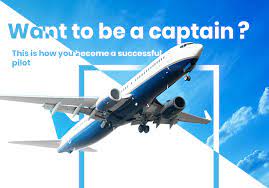The aviation industry is a realm filled with unparalleled opportunities and limitless skies. For many, the dream to become a pilot starts as a young child staring up at airplanes soaring above. But transforming this dream into reality requires navigating through a detailed process filled with rigorous training, stringent qualifications, and a commitment to continuous learning. Let’s break down the vital steps in your journey from ground-level enthusiasm to sky-high expertise.
Contents
Preparation Phase: The Basics
Educational Requirements
Before you even set foot in an aircraft, you need to meet specific educational qualifications. Most flight schools require a minimum of a high school diploma, but having a bachelor’s degree in aviation, engineering, or a related field can give you a competitive edge. www.stockdbsite.com
Medical Certifications
Your health is a priority when flying a machine that’s responsible for hundreds of lives. You’ll need a First-Class Medical Certificate from an Aviation Medical Examiner. Vision, hearing, mental, and overall health are evaluated.
Choosing the Right Flight School
Opt for a Federal Aviation Administration (FAA) or Civil Aviation Authority (CAA) accredited institution. Consider factors like cost, location, and the types of aircraft used for training.
The Training Pathway: Learning the Ropes
Private Pilot License (PPL)
The starting point of your aviation career. It involves a minimum of 40 flight hours, including 20 hours of flight instruction and 10 hours of solo flight.
Instrument Rating (IR)
After your PPL, you’ll proceed to Instrument Rating, which equips you to fly under a broader range of conditions. It requires a minimum of 40 additional flight hours and successful completion of a written exam.
Commercial Pilot License (CPL)
For those aspiring to make a career out of flying, a CPL is essential. It requires you to complete 250 flight hours and clear a rigorous written test.
Airline Transport Pilot License (ATPL)
The ultimate achievement for a pilot, the ATPL allows you to serve as a Captain or First Officer. It necessitates a minimum of 1,500 flight hours and passing a series of exhaustive tests.
Additional Training and Certifications
Type Rating
A specialization training for flying specific types of aircraft.
Instructor Certification
If teaching is your passion, this certification allows you to train future pilots.
Multi-Engine Rating
For those looking to fly bigger, more complex aircraft, a Multi-Engine Rating is essential.
The Financial Aspect: Cost and Scholarships
Flight training is expensive. Estimates put the cost at upwards of $50,000 for full training from zero to ATPL. Many institutions offer scholarships, grants, and financial aid to mitigate the financial burden.
Career Opportunities: Beyond the Cockpit
Commercial Airlines
The most straightforward career path, flying for commercial airlines can offer a lucrative income and the chance to travel the world.
Cargo Pilots
Flying cargo planes can be less glamorous but equally rewarding.
Agricultural Pilots
Specializing in crop-dusting and other agricultural tasks, this is a niche but important sector.
Corporate Pilots
Flying private jets for corporations offers a unique set of challenges and rewards.
Continuous Learning: Staying Current
The aviation industry is constantly evolving, and staying up-to-date with the latest advancements in technology and safety protocols is crucial. Regular check-ups, renewals of licenses, and ongoing training are a must.
Conclusion: Your Ascent to the Skies
Becoming a pilot is an ambitious endeavor, filled with challenges and unparalleled rewards. Your journey will involve rigorous training, a deep commitment, and a drive to continuously improve. Your cockpit awaits. It’s time to take flight.
